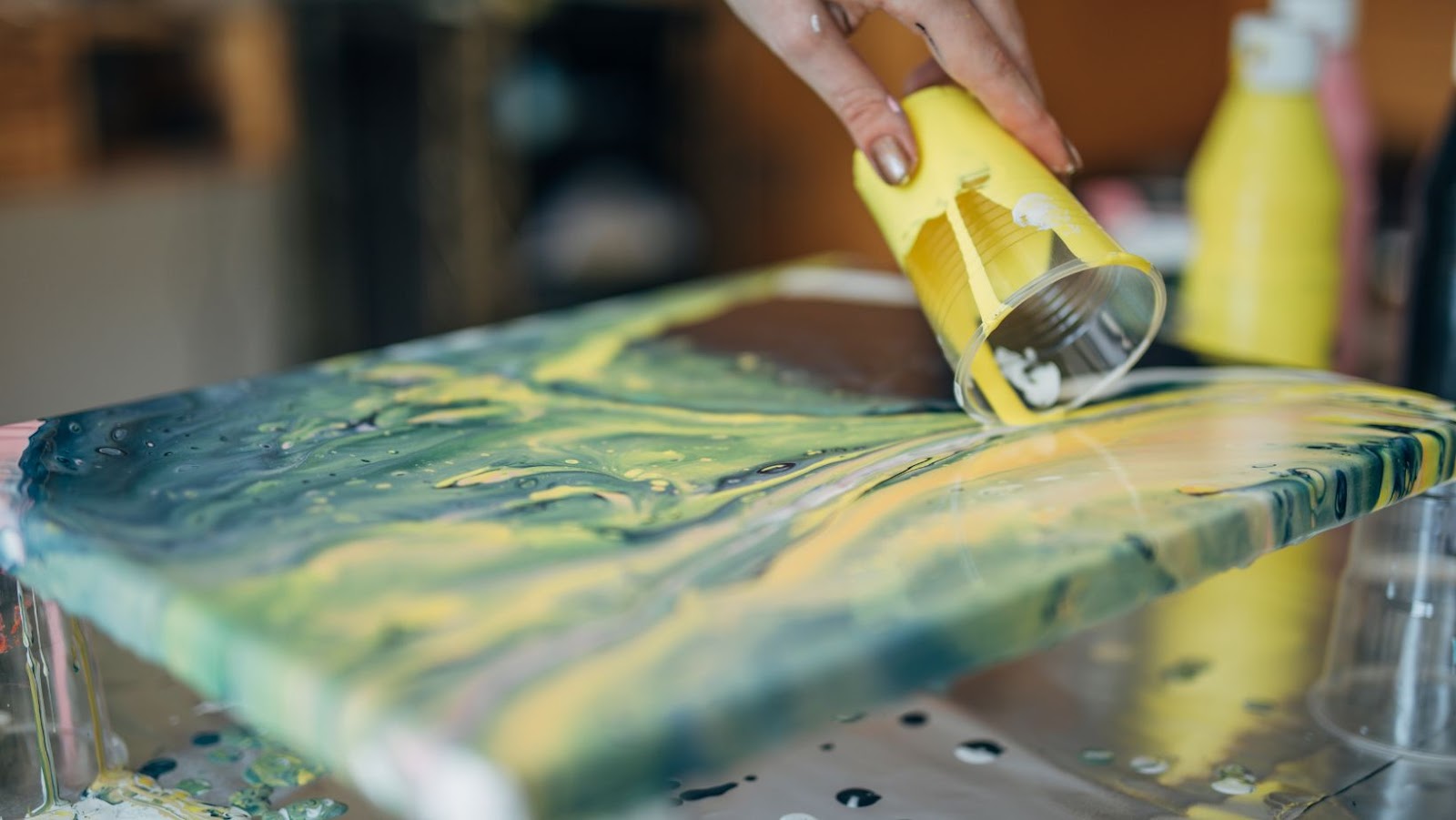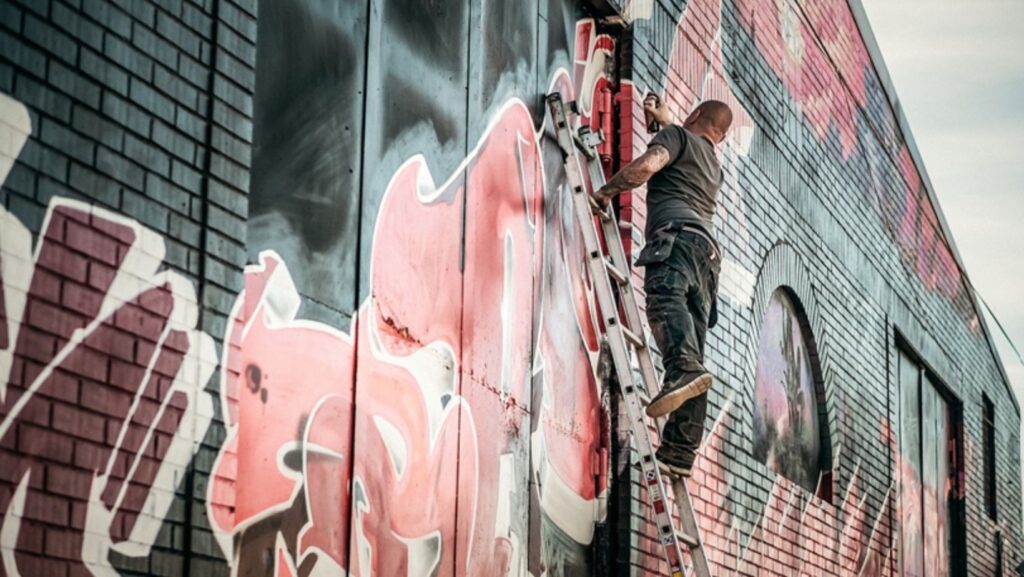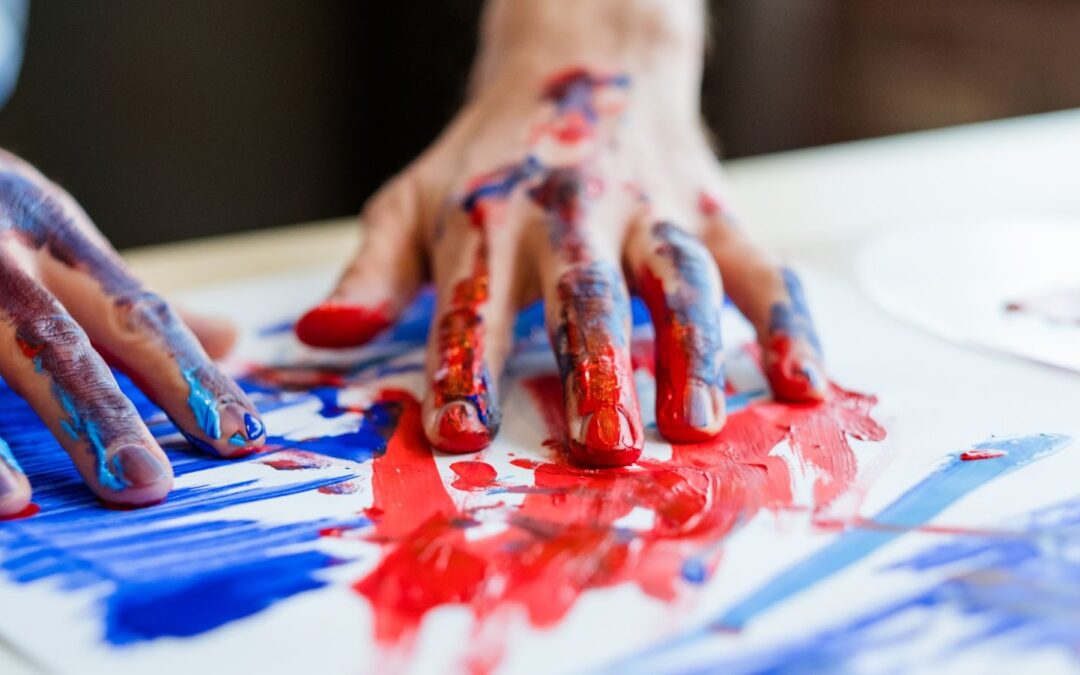Painting
Painting is the most basic yet important technique for creating outdoor murals. The goal is to use various colors, shades, and tones to create the desired effect. This can be achieved with traditional paintbrushes and rollers. Oil-based paint is the preferred choice for creating murals on wooden walls. If you’re wondering how long do oil paints take to dry, it takes six to eight hours for the paint to be ready for finishing. Oil-based paints also create a tougher coating, making them more durable and resistant to scuffs, bumps, and scrapes.
Sponging
Sponging is another popular technique used by muralists for outdoor art projects. As the name suggests, this method involves using sponges of various sizes and shapes to achieve unique textures on a mural’s surface.

Stenciling
Stenciling is often used with other techniques, such as painting and sponging, as it allows artists to create precise shapes that would otherwise be difficult or time-consuming to paint freehand. Stencils are particularly useful when creating complex patterns or textured designs on a large scale. They’re also great for adding intricate details like swirls and flames into existing murals.
Stippling
To the untrained eye, stippling may appear easy. However, creating something beautiful with dots of paint in different shapes and sizes takes skill and precision. Expert muralists use airbrushing techniques, manual brushwork, and sometimes even a toothpick to create stunning patterns and gradients that mimic nature’s beauty. When applied correctly, this method can create stunning abstract-style murals on larger surfaces, bringing artwork to life through subtle tones and hues.
Glazing
Glazing is a technique that involves layering transparent paints over each other to achieve vibrant colors or unique textures on a mural’s surface. This method requires practice since each layer needs time to dry before the next one can be applied, but it can yield impressive results once mastered. Glazing is great for adding highlights to existing paintings or creating elaborate backdrops filled with bright colors and patterns.

Final Thoughts
Whether you are an experienced artist looking for new ways to express yourself through mural painting or just getting started on your first project, these five techniques are key components for creating fantastic outdoor wall art pieces. Each step requires careful consideration, from painting and sponging through stenciling and stippling, delivering amazing results if done correctly. Don’t be afraid to experiment until you find a painting technique that works for you.

